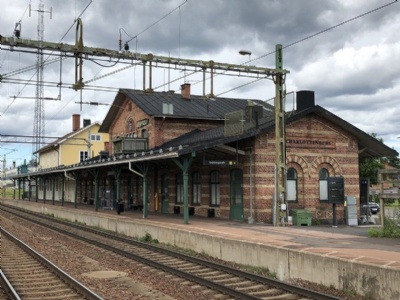Charlottenberg
When Germany invaded Soviet Union, June 22, 1941, the Germans requested that the fully armed Engelbrecht division (its official name was 163rd infantry division) be given a free lead through Sweden. The final destination was Finland, where they, together with the Finnish army, would be deployed in the fighting against the Soviet Union. Sweden’s neutrality was thus brought to the test. Sweden, however, in a time of german success did not want to displease the Germans’ by denying them free lead through Sweden and risking being drawn into acts of war. Therefore, the German request for transit was accepted. Between June 25 and July 12, 1941, 106 train transports with just under 15,000 soldiers passed the station in Charlottenberg. The trains were maintained and the soldiers were served food in the railway hotel cafe. The Engelbrecht division was wiped out in March 1945, in connection with the fighting in Pomerania.
When these ”german train” passed, it was forbidden for the inhabitants of Charlottenberg to stay at the station and even less to talk with the soldiers. From the Swedish side, there was concern that the trains would be exposed to sabotage and therefore there was great security around every transit. In addition to the transit of the Engelbrecht division, so-called "leave" trains also passed through Charlottenberg between 1940 and 1943. This was trains with German soldiers on their way to Germany on leave. Between June 1940 and August 1943, more than two million German soldiers were transported on Swedish railways (far from all passed through Charlottenberg). Only in August 1943, when the tide of war had turned into allied favor, did the Swedish government consider it risk-free to terminate the agreement with the germans.
Current status: Preserved (2020).
Address: Stationsgatan, 673 32 Charlottenberg.
Get there: Car.
Follow up in books: Gilmour, John: Sweden, the Swastika and Stalin - The Swedish Experience in the Second World War (2011).


The station is, to my knowledge, more or less unchanged since the war and there is nothing that informs about these transports. It was also nothing that I really expected and few are probably the contemporary travelers who know of the events that took place at the station. It does not deprive the station of its historical significance as part of the midsummer crisis (political crises) that the Swedish government faced in June 1941, what to do with the germans demands/requests.